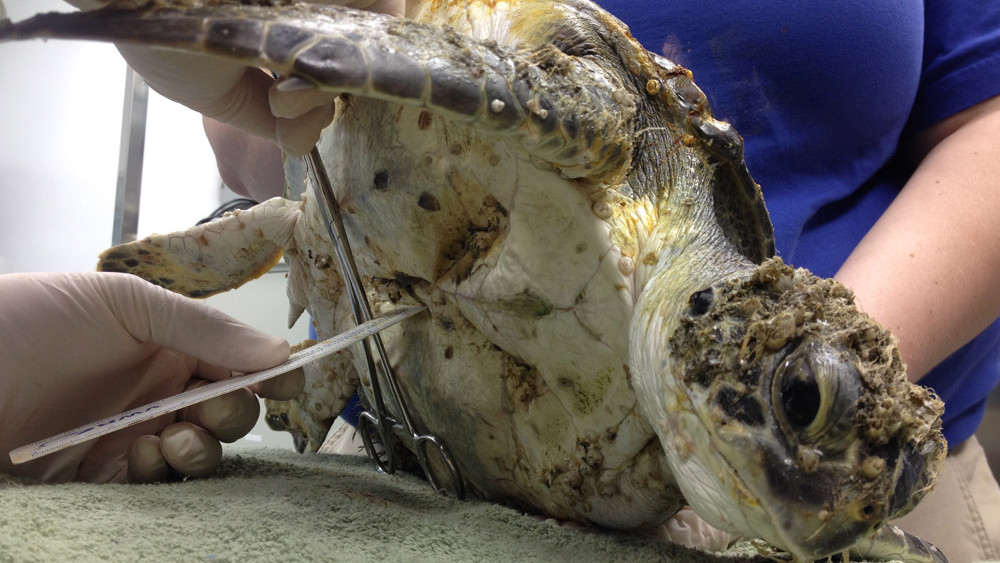Green (Chelonia mydas)
Stranding Location: Myrtle Beach, SC
Arrival Date: 05/06/2015
Age: Juvenile
Weight: 3.2 kg (~7 pounds)
Case History
The amazing team at Ocean Watersports in Myrtle Beach have rescued yet another sea turtle! Last year they found McAdoo, a juvenile loggerhead that was suffering from both a boat strike and a shark attack and is still healing in our Sea Turtle Hospital. On May 6th, they observed a little green sea turtle getting tossed around in the surf. When they rescued this weak green turtle from the waves, they realized the turtle was severely emaciated, covered in barnacles, and in need of immediate medical attention. After making a call to North Myrtle Beach turtle team leader Linda Mataya, who is trained and permitted by SCDNR to transport sick and injured sea turtles to our turtle hospital, she retrieved this animal and transported it to Charleston for treatment in our Sea Turtle Hospital.
Treatment
This little turtle, named “Barnacle Bob,” is an extremely interesting case. Based on the physical exam, s/he is the most emaciated turtle we’ve ever admitted. Surprisingly, this green had a moderate blood glucose level of 48 and a high PCV of 31 (% of red blood cells), values very odd for a turtle so malnourished. Blood sodium levels were extremely high, likely caused by severe dehydration, so aggressive fluid therapy began immediately. This turtle also had a fairly severe arrhythmia (irregular heart beat) that normalized somewhat after treatments were administered. Like the two admission from the last two days (see Portia and Price), the turtle was extremely weak and so was put on a bed of wet foam overnight.
Updates
14 May 2015: It is astounding that this severely ill turtle is still alive and fighting for survival in our hospital, as initial prognosis was extremely poor. Our vet, Dr. Boylan, has been closely monitoring this case to ensure the correct fluids are provided as needed. Barnacle Bob has no appetite and is refusing both vegetation and fish, and so parenteral nutrition in the form of an intravenous fat emulsion, Intralipid, is being provided directly into the bloodstream almost daily. This turtle is able to swim for short periods of time (up to an hour) in saltwater, but becomes exhausted quickly and so is primarily being housed on a soft bed of wet foam.
14 July 2015: Barnacle Bob is doing so well in our hospital! This sea turtle has undergone one of the most astounding turnarounds we’ve ever witnessed, and we couldn’t be more thrilled. This little green turtle has gone from being too weak to swim to constantly motoring around his filtered tank, and he loves swimming through the car wash strips we’ve provided to simulate the sea grass beds green turtles normally associate with in the wild. His shell is now free of epibionts and is covered by a new, beautiful layer of keratin that radiates with the sunburst patterns typically seen on healthy green sea turtles. Blood work performed last week was fairly good (PCV 21%, total solids 2.9), and we 24
July 2015: Bad news: In preparation for Barnacle Bob’s return to the wild, our vet performed a full physical exam and found evidence of a joint infection in Bob’s right front flipper. Release will be delayed, possibly by several months, until we are confident that this infection is resolved.
Release Date
September 16, 2015
Release Location
Isle of Palms County Park


